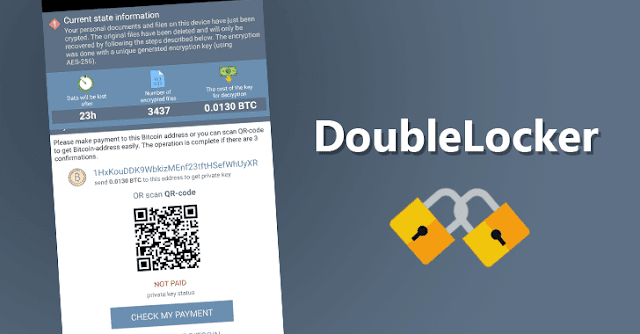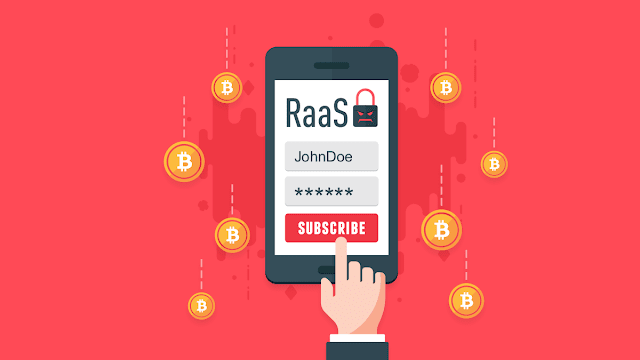DoubleLocker ransomware for Android, lock your device twice!
Criminals have once again launched a ransomware
attack on android based phones this time it is called DoubleLocker.
It is a ransomware program that has been designed to take
over your phone and even changes your PIN, which allows the app to be in complete
control.
DoubleLocker spreads in the very same way as its banking parent does. It is
distributed mostly as a fake Adobe Flash Player through compromised websites.
As we can see in the pic above the fake adobe flash player app installed on a android device.
Once launched, the app requests activation of the malware’s
accessibility service, named “Google Play Service”. After the malware obtains
the accessibility permissions, it uses them to activate device administrator
rights and set itself as the default Home application, in both cases without
the user’s consent.
Setting itself as a default home app a launcher is a trick that
improves the malware’s persistence. Whenever the user clicks on the home
button, the ransomware gets activated and the device gets locked again. Thanks
to using the accessibility service, the user doesn’t know that they launch
malware by hitting Home.
Activate device administrator? does a flash player really require to erase all data on your phone and be in total control?
The fraudulent app has been found on several websites.
DoubleLocker also encrypts the user’s data making it nearly
impossible to regain control of their own device without paying a ransom. If
you happen to become infected with it, experts recommend taking your phone to a
professional for servicing and to never give in to paying the ransom.
DoubleLocker, once executed on the device, creates two reasons for
the victims to pay.
First, it changes the device’s PIN, effectively blocking the victim
from using it. The new PIN is set to a random value which the attacks
neither store nor send anywhere, so it’s impossible for the user or a security
expert to recover it. After the ransom is paid, the attacker can remotely reset
the PIN and unlock the device.
Second, DoubleLocker encrypts all files from the device’s primary
storage directory. It utilizes the AES encryption algorithm, appending the
extension “.cryeye”. “The encryption is implemented properly, which means that,
unfortunately, there is no way to recover the files without receiving the decryption
key from the attackers.
The ransom has been set to 0.0130 BTC (approximately USD 81 at
time of writing) and the message highlights that it must be paid within 24
hours. However, if the ransom is not paid, the data will remain encrypted and
will not be deleted.
While the ransom itself isn’t super expensive, it’s still a ransom
nonetheless. With DoubleLocker, the creators also designed it to give the fake
app administrative privileges.
If any app that isn’t legitimately related to device security or
protection/location, it should be an instant red flag to the user if it’s
asking to be granted any kind of administrator permissions. In other words, an
app for viewing videos doesn’t need that kind of access to a device no matter
what.
The fake app, once downloaded and installed, remains inactive but
not for long. As soon as you tap the “home” button on the infected device,
DoubleLocker becomes instantly activated and the process begins.
It proceeds to lock down the phone and because it was granted
administrative permissions, the attackers have the ability to change passwords,
change ring tones and ring behavior. They can also wipe all data from the device
and even locate it if they wish. Paying the ransom is not a guaranteed fix
either so again, avoid giving in to doing that.
How to get rid of it?
In the ransom note, the user is warned against removing or
otherwise blocking DoubleLocker: “Without [the software], you will never be
able to get your original files back”.
To prevent unwanted removal of the “software”, the crooks even
recommend disabling the user’s antivirus software.
Such advice is irrelevant: all those with a quality security
solution installed on their devices are safe from DoubleLocker.
The only viable option to clean the device of the DoubleLocker
ransomware is via a factory reset.
For rooted devices, however, there is a method to get past the PIN
lock without a factory reset. For the method to work, the device needed to be
in the debugging mode before the ransomware got activated.
If this condition is met, then the user can connect to the device
by ADB and remove the system file where the PIN is stored by Android. This
operation unlocks the screen so that the user can access their device. Then,
working in safe mode, the user can deactivate device administrator rights for
the malware and uninstall it. In some cases, a device reboot is needed.
As for the data stored on the device, there is no way to recover
it, as mentioned earlier.
DoubleLocker serves as just another reason for mobile users to have
a quality security solution installed, and to back up their data on a regular
basis.
Avoid downloading anything outside of a trusted source such as the
Google Play Store.
And most importantly don’t allow download from
Unknown Sources







Comments
Post a Comment